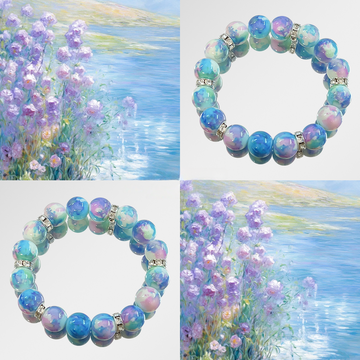Timeless Design Elements of Traditional Classical Stone Bracelets
Traditional classical stone bracelets have long been celebrated for their elegance, cultural symbolism, and craftsmanship. These pieces often draw inspiration from historical motifs, natural forms, and artistic philosophies that transcend generations. Below, we explore the key design elements that define their enduring appeal, from symbolic patterns to intricate detailing.
Cultural Symbolism Embedded in Motifs
Many classical designs incorporate motifs rooted in mythology, spirituality, or nature. For example, dragons and phoenixes—common in East Asian jewelry—symbolize power and rebirth, respectively. These mythical creatures are often carved into stones like jade or agate, with flowing lines that mimic their mythical forms. Similarly, lotus flowers, representing purity and enlightenment, appear in intricate reliefs or engravings, adding layers of meaning to the piece.
In Western traditions, classical bracelets may feature laurel wreaths or grapevines, evoking themes of victory and abundance from ancient Greece and Rome. These motifs are not merely decorative; they serve as storytelling devices, connecting the wearer to broader cultural narratives. The choice of stone often complements these symbols—deep green jade for harmony, or amethyst for spiritual protection—enhancing their intended message.
Natural Inspirations: Flora, Fauna, and Geometric Harmony
Nature plays a central role in classical bracelet design, with floral and animal motifs dominating many styles. Peonies, chrysanthemums, and plum blossoms are frequently depicted in East Asian pieces, each carrying its own symbolic weight (e.g., prosperity, longevity, or resilience). These designs are rarely static; petals curve dynamically around the stone, creating a sense of movement and life.
Animal motifs, such as butterflies or fish, are equally prevalent. In Chinese art, butterflies symbolize love and transformation, while koi fish represent perseverance. These creatures are often rendered in high relief or as openwork carvings, allowing light to pass through and highlight their delicate forms. Geometric patterns, like interlocking circles or meanders, also appear, reflecting a balance between order and natural fluidity.
Craftsmanship Techniques: Carving, Engraving, and Inlay Work
The artistry of classical stone bracelets lies in the techniques used to shape and adorn them. Hand-carving is a hallmark of high-quality pieces, with artisans chiseling fine details into the stone’s surface. This process requires precision, especially when working with harder materials like quartz or jasper, to avoid cracks or uneven textures.
Engraving adds depth and contrast, often used to outline motifs or create textured backgrounds. In some traditions, gold or silver inlay is applied to highlight specific elements, such as the eyes of a carved animal or the veins of a leaf. This juxtaposition of materials enhances visual interest while showcasing the craftsperson’s skill. Openwork carving, where sections of the stone are removed to create lace-like patterns, is another advanced technique that demands both patience and expertise.
Color and Material Pairings: Enhancing Aesthetic Appeal
The selection of stones and their arrangement is critical to classical design. Monochromatic schemes, such as white jade with silver accents, exude understated sophistication, while multicolored pieces—like turquoise paired with coral or lapis lazuli—create vibrant contrasts. In some cultures, specific stones are chosen for their believed metaphysical properties, such as rose quartz for love or tiger’s eye for courage.
The shape of the stones also influences the overall design. Cabochons (smooth, domed cuts) are favored for their ability to reflect light softly, while faceted stones add sparkle and modernity. Artisans may combine these cuts strategically, placing a cabochon at the center of a floral motif and surrounding it with smaller faceted gems to draw attention to the focal point.
Traditional classical stone bracelets are more than accessories; they are artifacts of cultural heritage and artistic innovation. By blending symbolic motifs, natural inspirations, and meticulous craftsmanship, these pieces continue to captivate wearers and collectors alike. Whether passed down through generations or discovered anew, their timeless design elements ensure they remain relevant in an ever-changing world.







